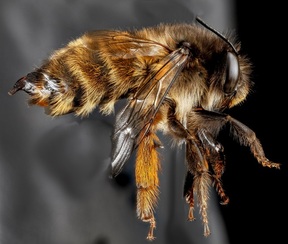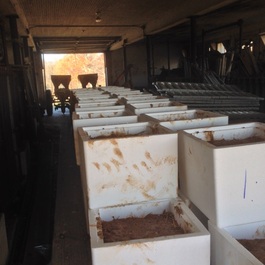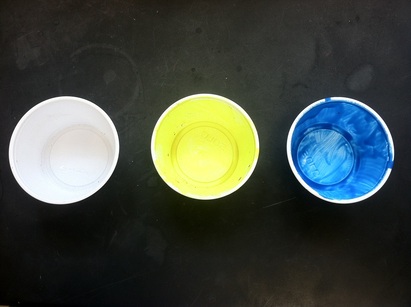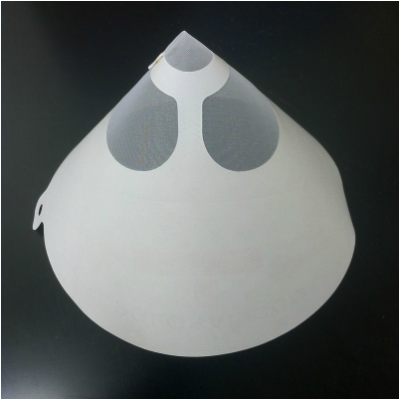By: Lisa Kuder
Graduate Student
Earlier this month, seven members from the Bee Lab and experienced cobbler Ed Razuazo made over five dozen adobe nesting blocks for the study of an introduced bee Anthophora plumipes and its native relative Anthophora abrupta. Anthophorine bees belong to the superfamily Apidae. Like honey bees (Apis mellifera) they are polylectic and excellent pollinators of specialty food crops. Yet major biological differences exist between these solitary bees and their colonial relatives. Each spring newly emerged females spend their short adult lives provisioning their respective nests in dry clay banks, upturned root stumps or the walls of adobe homes. Suzanne Batra demonstrated that adobe blocks can also successfully serve as nest sites.(1)
 A. plumipes, Female; Photo Credit: USGS-BMIL
A. plumipes, Female; Photo Credit: USGS-BMIL Commonly known as the Hairy-Footed Flower Bee, A. plumipes was introduced to the Mid-Atlantic Region in the early 90s as a potential pollinator of early spring crops. It has since naturalized in MD/VA/DC and in 2013 was reported in PA. Release dates/locations and sampling data from the mid-90s to the present were meticulously recorded; thus, providing a unique opportunity to study this non-native bees’ successful establishment, as well as to explore its early interactions with native ecosystems. Specifically, why has A. plumipes’ spread so quickly despite existing competition? Does resource competition occur between the introduced and extant species? What role does it play in the pollination of local fauna? How does parasitism and rate of disease relate to species’ fitness? These are some of the questions that I aim to answer. Portable nesting blocks will greatly aid in the monitoring of these two Anthophora species.
 Completed Adobe Blocks; Photo Credit: Lisa Kuder
Completed Adobe Blocks; Photo Credit: Lisa Kuder The three main ingredients of adobe are clay, masonry sand and chopped straw. Five different ratios of clay/sand were used to allow for testing of whether optimal nesting habitat is different between species. Below are the basic steps to creating adobe blocks: 1) remove rocks from clay by sifting soil with a mesh screen, 2) mix desired ratios of clay and sand by rolling the dry ingredients on a small tarp, 3) add water to moisten, 4) once adequately ‘squishy’ add straw, 5) mix thouroughly by rolling the adobe back and forth, 6) place the mud mixture in Styrofoam or wood forms, then finally 7) once dry use a masonry bit to drill starter bee tunnels in the adobe. I chose to leave the adobe in Styrofoam containers because they will afford protection against the elements and keep the clay dry, which is key to successfully rearing Anthophorine bees. These blocks will be placed in a greenhouse so they can thoroughly dry over the winter, and thus be ready for use in the field this spring.
References
(1)Batra, S. W. T. (1994). "Anthophora plumipes villosula Sm. (Hymenoptera: Anthophoridae), a manageable Japanese bee that visits blueberries and apples during cool, rainy, spring weather." Proceedings of the Entomological Society of Washington Volume 96.
(1)Batra, S. W. T. (1994). "Anthophora plumipes villosula Sm. (Hymenoptera: Anthophoridae), a manageable Japanese bee that visits blueberries and apples during cool, rainy, spring weather." Proceedings of the Entomological Society of Washington Volume 96.



 RSS Feed
RSS Feed